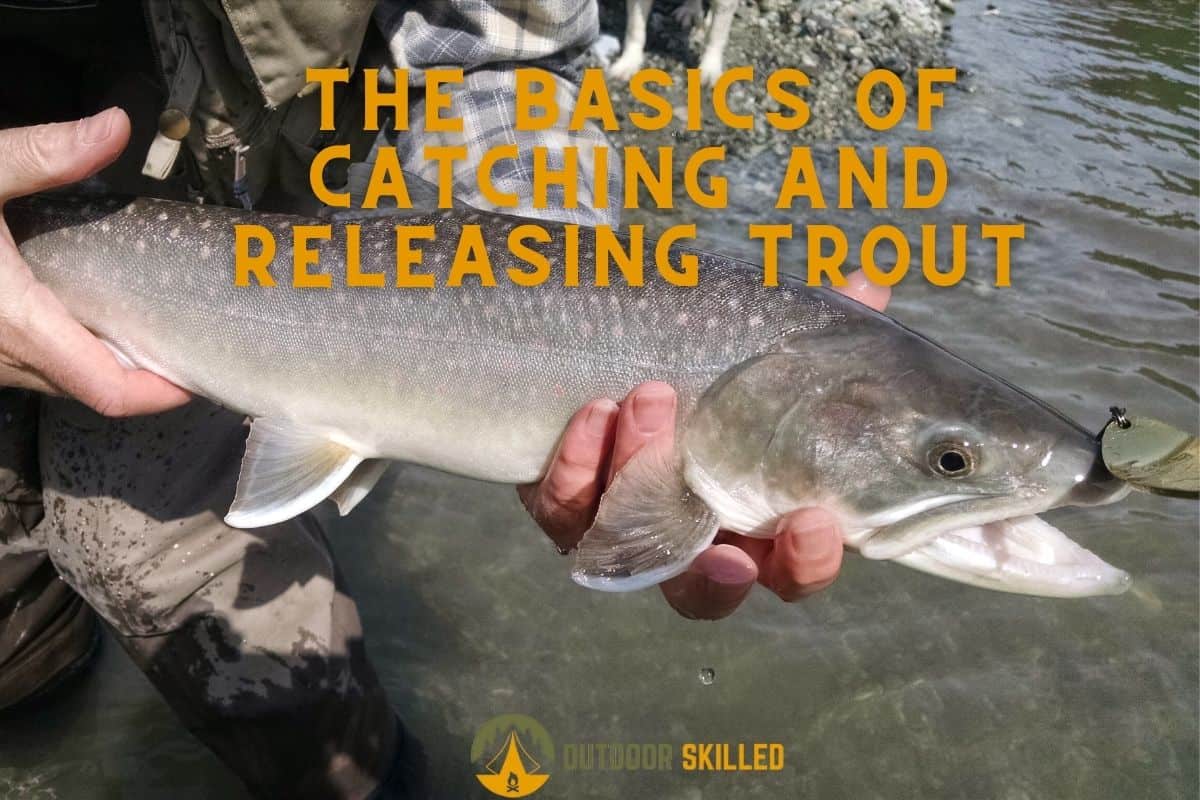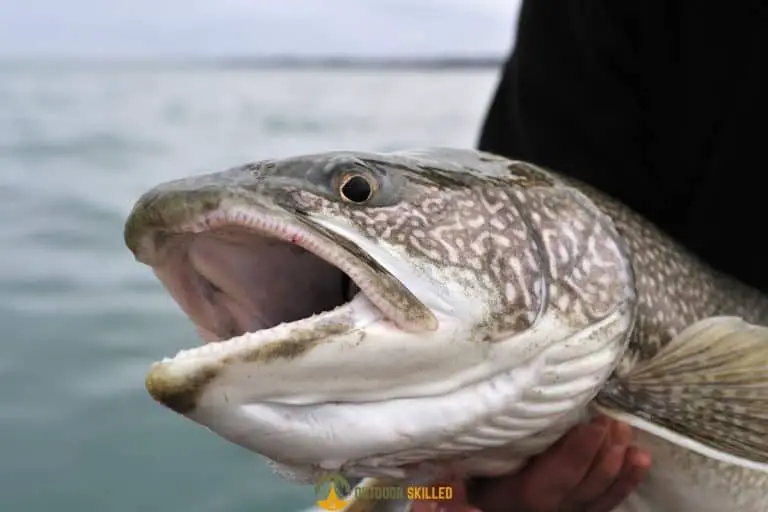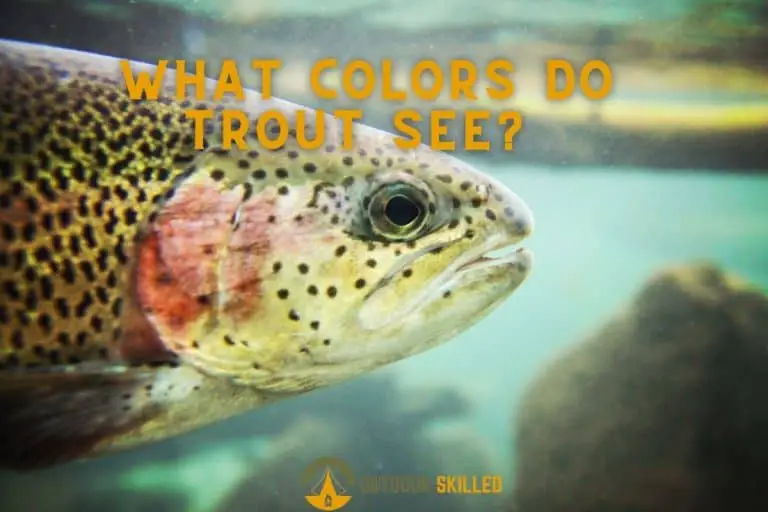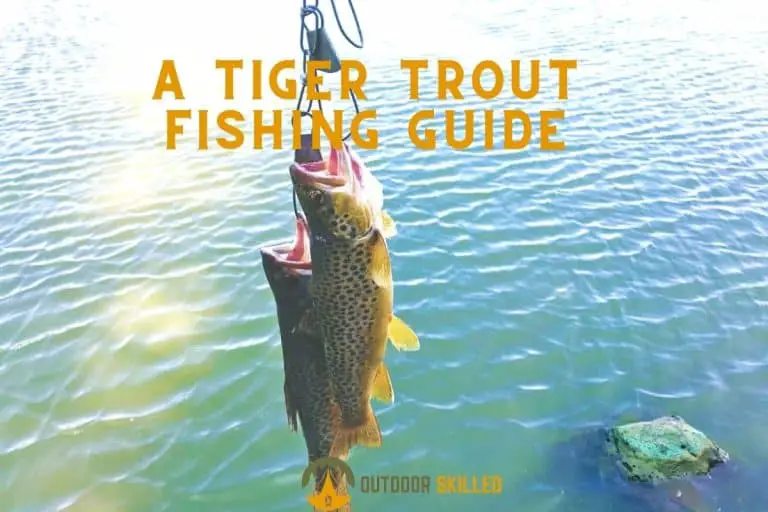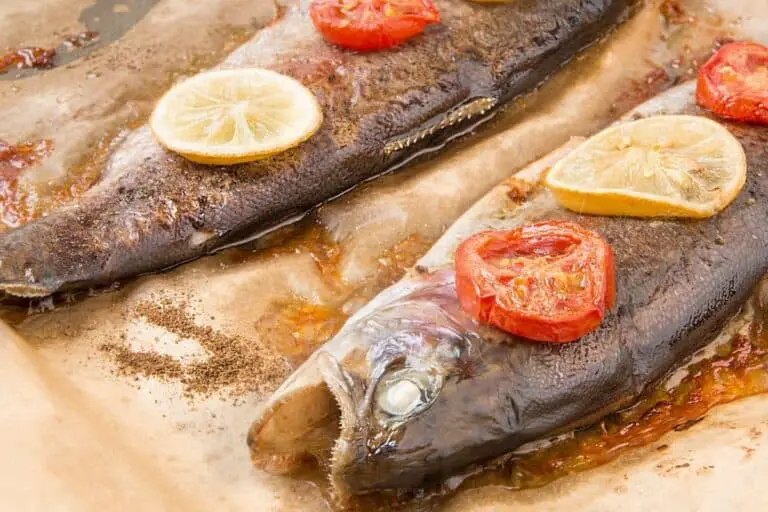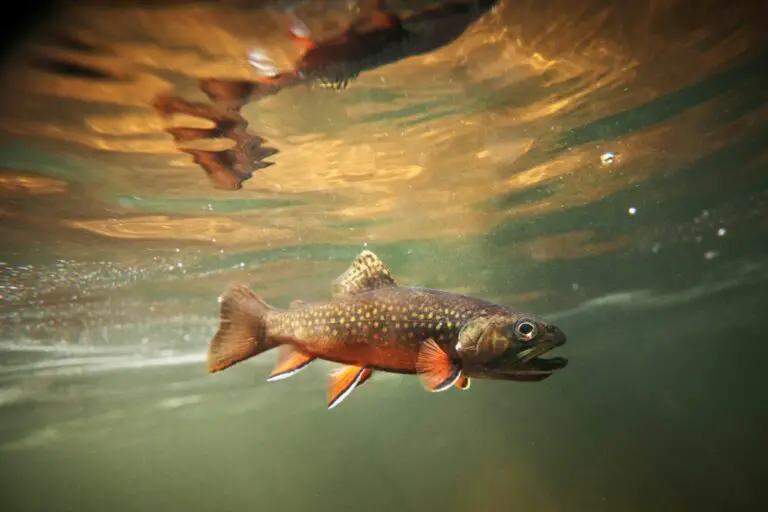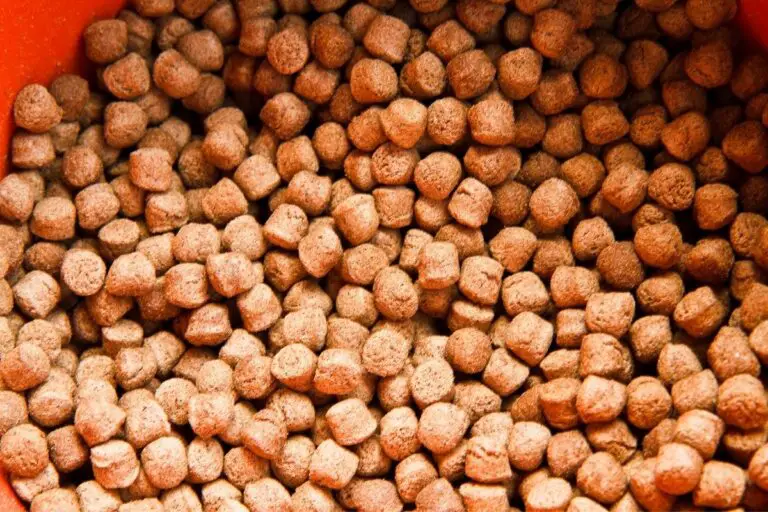How to Catch and Release Trout? A Step-by-Step Guide
Catching a game fish like trout is an amazing experience any angler would like to have. But when it comes to safely catching and releasing trout properly, many people overlook some important points that prevent trout from dying after being caught.
How to catch and release trout? To catch and release trout you need to get it quickly to a rubber net while keeping it underwater, handle it with wet hands without squeezing, and remove the hook carefully. You need to release as fast as possible by pointing its nose into the water so it flows over its gills before you let it go.
Keep reading to know the tips and tricks of how you can safely and correctly catch and release trout unharmed.
Table of Contents
How To Hold and Handle Trout Safely?

Trout can be very sensitive when taken out of the water. That’s why handling trout is as important as releasing it to keep it alive and healthy. You must make sure you’re doing it right not to accidentally kill it or cause damage that can kill it even if it successfully swims away when you put it back into the water.
Follow these steps to ensure you’re not damaging trout when you catch it:
- Use barbless hooks. They are much easier and faster to remove from the fish mouth and they’re proven to cause less damage to it.
- Use a rubber net. It depletes the slime layer on the trout scales that help protect it from disease. Using knotted string or nylon nets can cause damage to scales, tails, and fins. Get your rubber net from Amazon here.
- Quickly place trout in a rubber net. The sooner you get them in the net the better. When you exhaust trout in the fight, lactic acid builds up in its body. This can cause the fish to die eventually even after it manages to swim away.
- Keep trout in the water. The maximum time you’re allowed to take trout out of water is 10 seconds before you need to get it back in. So it’s safer to do your measurement and take photos while it’s in the net underwater.
- Use a release tool to remove the hook. Long-nosed forceps are an easy and fast way to ensure that you removed the hook without cuts or any sort of damage. Be careful not to squeeze trout to keep it stable while removing the hook because this damages its internal organs. If it’s deeply hooked it’s less damaging to cut the hook and leave it behind.
- Handle as little as possible with wet hands only. Wet hands are less likely to damage the protective slimy layer that helps protect the fish’s skin from disease. If you’re holding it for pictures, use your both hands to support it at the vent and the pectoral fins, and don’t ever squeeze it for a better grip.
- Point their nose into the water. It’s important to oxygenate the trout and keep holding it until it gains strength before you release it. Don’t let it go until it gives strong tail-swimming movements and tries to escape your grip.
Here is an image of how to support trout the right way using both your hands:

Following this guide will ensure you’re properly handling trout and successfully releasing it back for someone else to enjoy this exciting fight as much as you did.
Already prepping for your next fishing trip? Make sure to check out my recommended Trout Spinning reels here. These are the best options available if you want success catching trout, and I’m sure they are going to serve you as well as they served me.
How To Choose The Best spots to catch trout?
So, how do you choose the best spots to catch trout? The best spots to catch trout are the shelter provided by deeper water and wherever they’re close to an easy meal. They often suspend at the edge of the current or lie along with the bottom. You’re more likely to find them in riffles especially on cloudy days.
Trout like shade and easy meals, so wherever one of these two exists you’ll be more likely to find trout. Too general? Here are some of the best hotspots you can catch trout:
- Runs
Runs are prime spots for trout as the current there is slower. They like to hide there especially in the mornings and evenings when they need a place to hide and relax or preparing to go upstream for their next meal.
- Pools
Pools are the deepest slowest parts of the river. Trout like to stay in pools and feed on the food that passes by. You may not get a quick strike when you cast your lures there but with some patience, it pays off.
- Rocky areas
In streams with heavy flow and fast current, water may rush around a big rock or boulder right in the streambed but they provide an obstacle trout like to use the cover of it as a holding spot where they can watch for their next meal.
- Undercut banks
Similar to rocks, trout enjoy being around undercut banks because of the overhead cover it provides to protect them from predators that like to attack from above. Make sure to cast upstream and let the current sweep your bait in and under the bank, don’t position yourself right above the undercut not to spook them.
As a rule of thumb, look for trout anywhere deep, shady, and rich in food. Cast your lures upstream and let the current sweep your bait where you want. It may take a little practice but it’s effective in catching trout.
Best Times of The Day to Catch Trout
Some anglers say that trout will bite any day and time if given the right bait in the right spot. However, picking the exact right time is essential in maximizing your chances of getting successful strikes of trout.
Summer
The best time to fish for trout during summer is early morning and late afternoon. You can try midday fishing only if it’s overcast, cloudy, or rainy. Fishing midday might be a terrible idea If it’s hot and the sun is in the middle of the sky, trout will dive deeper and hide to seek shade.
Spring
The best time of day to fish is mid-to-late morning followed by mid-to-late afternoon. Go for early mornings if the temperature is a bit warm. As we move later in spring, your chances will be better in the late afternoon.
Winter
During winter, The best time of day for trout fishing is mid-to-late morning. Late afternoon can sometimes generate good results too. Winter by far is the most productive season for trout fishing.
Fall
In early fall days, early morning will serve you best followed by mid-to-late afternoon. In later fall days, you may want to stick with mid-to-late afternoons. Avoid nighttime in the fall as trout is less active then.
Pro Tips for catching trout
- Target trout on cold days. Trout are cold-water lovers and brown trout prefer water temperatures of less than 59°F (15°C). They feed heavily then and you can easily get one on the hook.
- Use live bait. Bait like scrub worms, earthworms, minnows, mudeye, maggots, yabbies, crickets, grubs, and grasshoppers will be effective almost any time you go fishing for trout. Their smell attracts them from afar.
- Target rainy days. It might be a challenging task to fish during the rain but it boosts your chances of catching trout as they react very favorably to rain. Using dry flies will guarantee you some trout strikes.
- Use a long-handed net. This will make it easier for you to reach down into the water to net trout instead of getting it on the boat. It’s also safer to keep the fish underwater while you unhook it.
- Choose the right gear. When fishing for trout, a good set of gear will be a 6 foot 10 rod that 2-4 kilo paired with a 2000 size reel spooled with 8-pound braid and an equivalent fluorocarbon leader.
Choosing the right gear can be difficult, I know. I have been fishing trout for so long that I’ve tried a lot of good and bad options in almost every category, so I’ve made some guides to help my fellow anglers.
You can check out my recommended Trout Fishing Lines here, and you can check out the best trout fishing rods here.
Related Questions
Do trout die after catch and release?
No, trout don’t necessarily die after catch and release if you hold and release it properly. Trout may die from improper holding and squeezing it leading to damaging its internal parts. If you hold it with caution for less than 10 seconds and support it with both hands until released, it’ll survive.
Does Touching a Trout Kill It?
No, touching a trout doesn’t kill it as long as your hands are wet and far from its gills. Keeping your hands away will prevent gills from being damaged and wet hands are less likely to damage the protective slimy layer that helps protect the fish’s skin from disease.
Can Trout Bite Humans?
Yes, trout can bite humans. Big trout have a strong jaw and a sharp set of teeth that can bite a human and cause cuts and scrapes. However, smaller trout are not able to do the same damage as their teeth are small.
Helpful Resources
If you like this article, please share it or pin it, you can find the share buttons below. We will really appreciate it ❤️

